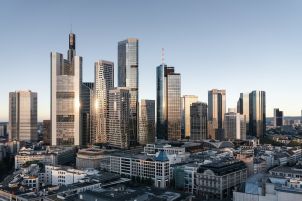Biomimicry uses nature as a source of new solutions that can help meet human needs. In some ways, the idea goes back to Leonardo Da Vinci and probably further back still. For example when the architect Filippo Brunelleschi designed the Dome over the Santa Maria del Fiore Catherdral in Florence in the 15th century, he looked at bird shells and seashells for inspiration, in order to help him design the thinnest possible dome. Nowadays, thanks to superior scientific knowledge, we are able to look at those bird shells and seashells and understand a lot more about the microstructure and the science, allowing us to go much further than the first pioneers of biomimicry.
What I find truly amazing is how many solutions nature offers us, we have a sourcebook of fantastic solutions that exist in the living world. Solutions which have benefitted from an incredibly long refinement process, through the process of evolution.
As architects, we are able to take these elements and use them to help create more efficient structures, to use materials in an increasingly sensible way so that we can integrate them into zero-waste, circular systems. We can even learn how to make zero-waste cities that allow better quality of life for their inhabitants.
A global garden: the Eden Project
When I worked on the Eden Project in the UK, we made a conscious attempt to learn from biology. This was carried out from the very early stages, when we were looking at how to incorporate the building into the site, through to the way we structured it, enclosed it, and even the way we formed the junctions between the domes.
The domes in the Eden Project are what makes the site so unique. Two huge structures which house distinctly different biospheres that people can explore. The first a humid tropical biome and the second, the warm temperature biome. To build these domes we looked to nature and how spheres
are subdivided in biology. It’s nearly always with a combination of hexagons and pentagons, and that led to the tri-hex grid, which is the name of this type of structure. What we found when looking into this further is that these kind of structures can often be light and efficient, just by using pressurised membranes. That’s partly what led to the idea of using an inflated material, ETFE, a high-strength polymer, which accounts for only 1% of the weight of double glazing. That led to significant savings being made, as by using such a lightweight material we needed far less steel, had more sunlight coming into the building, and required a lot less in the way of foundations.
Making significant cost and carbon savings are intrinsic to the projects I work on, like the office building that we have designed which shows savings of about 50% in glass, 75% in aluminum and 30-40% in concrete. Not only does the building cost less to build but it will be much better for those inside, in terms of the quality of space and light and the views that it affords.


What I find truly amazing is how many solutions nature offers us, we have a sourcebook of fantastic solutions that exist in the living world. Solutions which have benefitted from an incredibly long refinement process, through the process of evolution.
Biomimicry at a city level
For me, there is a distinction between sustainable and regenerative. We need to go beyond sustainable developments because that mindset has been proven to be extremely limited. It’s limited in terms of its framing, which is too human-focused and doesn’t acknowledge the rest of the living world. It’s also limited in its ambition because it’s about mitigating negatives, about trying to be “less bad”. We need to get above that line of neutrality and find a way to deliver net positive impacts. With governments needing to make radical carbon savings in the next 10 years, unless we make real changes to our cities and ways of life, we’re in deep trouble as a species.
I’m convinced that biomimicry is one of the best ways to do that: if you look at ecosystems, all their characteristics are ones we can learn from. Generally speaking, they are always regenerative rather than extractive. Ecosystems, left to their own devices, become more and more productive, abundant and richly diverse. This is something which we could really start to emulate in the way we design cities.
As an architect, it’s really important to have an understanding of complex systems. If you look at the living world, an amazing array of interconnected, nested systems exist. The challenge for us is how to integrate what we do into those systems, thinking about using the characteristics of ecosystems when designing our cities. By doing that, we can steadily work towards completely zero-waste systems. That will mean many decisions need to be made, about the kind of materials we use and the way we incorporate them into buildings, but I’m convinced it is completely possible.
Pandemics and our relationship with nature
I feel sure that the Covid-19 pandemic marks the end of human exceptionalism: the idea that we are somehow insulated from the laws of physics, climate change, and those of chemistry and biology. We know that most pandemics come from animals, and the more we disrupt ecosystems, the more we’re going to experience them. What I hope is that this encourages us to adopt a more respectful relationship with the rest of the living world, and how we integrate ourselves into it. We certainly must understand and respect its importance.
One of the related subjects to biomimicry is biophilia, which is the idea that, because humans evolved in direct contact with nature, that we are healthier and more productive when we’re in regular contact with it. This is a whole discipline that can be applied to the design of buildings. There’s a well-documented example from the Paoli Memorial hospital in Pennyslvania, America with patients recovering from the same operation. Half the beds had a view out onto a planted courtyard, the other half had a view onto a blank brick wall. The people who could see nature recovered faster and needed less pain-relieving drugs. If you think about the human benefits of that – quite apart from the economic benefits, that’s the way we ought to be designing our hospitals. And why stop with hospitals? Why not design our workspaces, schools, homes and even cities in that way as well?





